Walking Map
Explore Kristinehamn on foot.
Download the walking map and take a walk through the heart of Kristinehamn, where old wooden houses and maritime heritage meet.
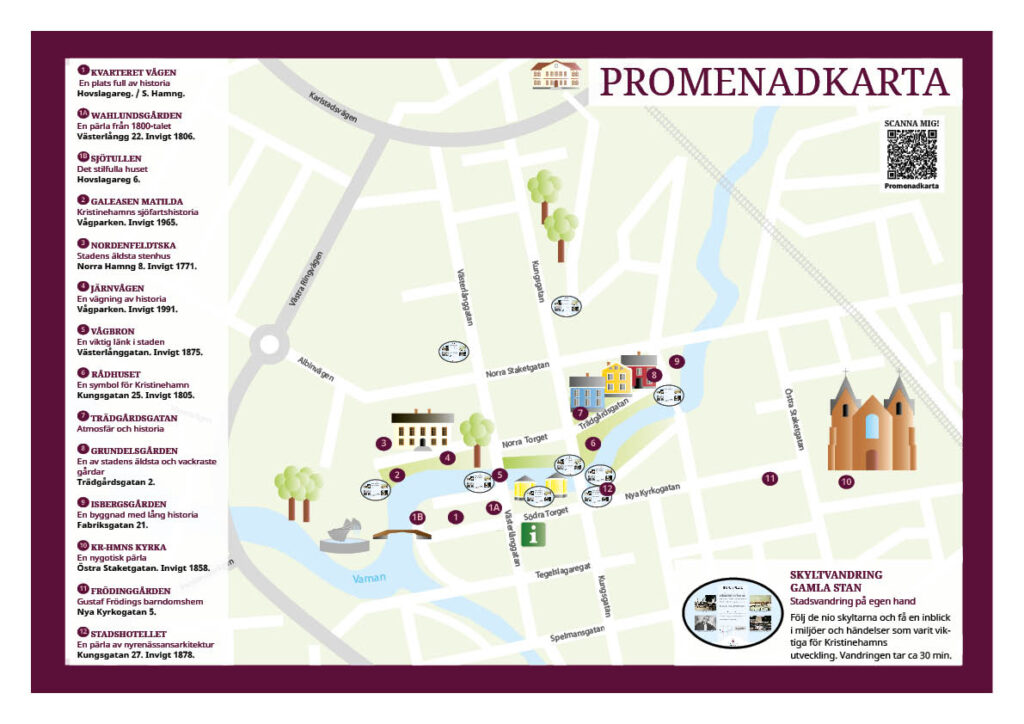
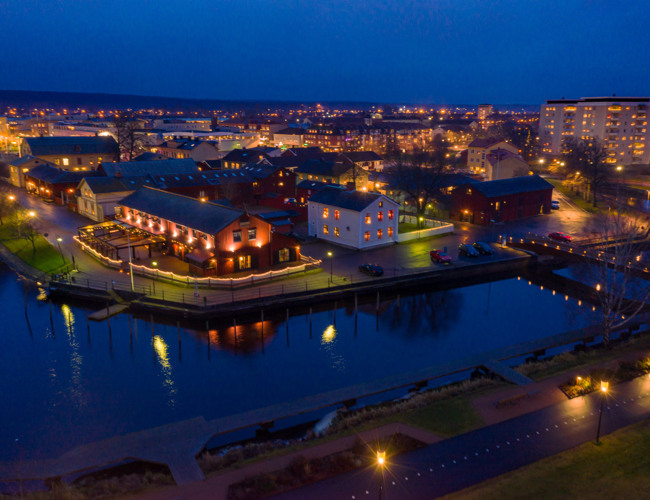
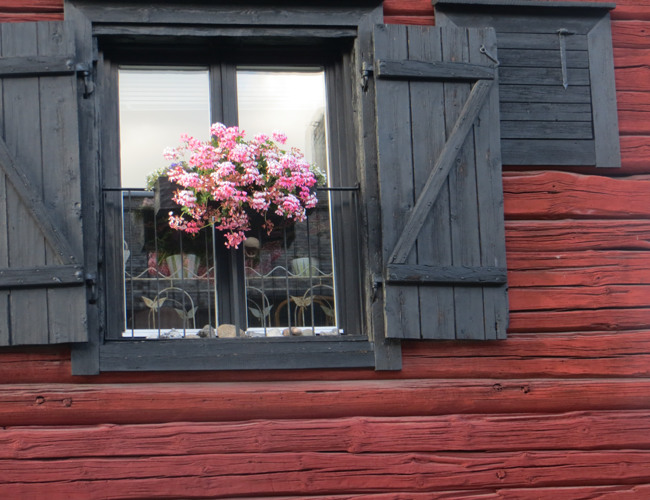
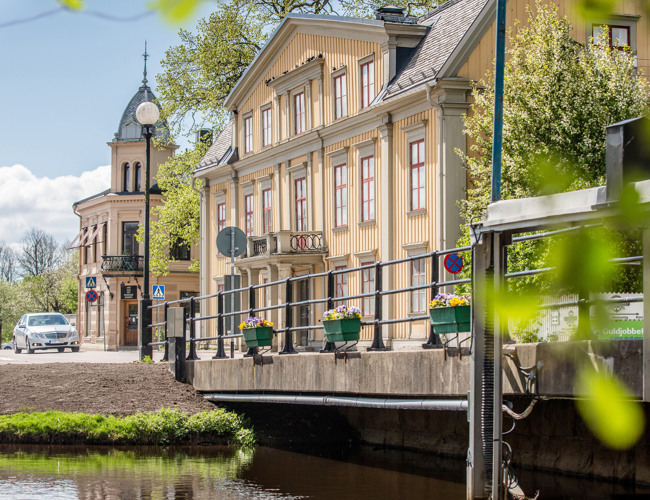
1. Vågen historic block
Kristinehamn was a trading and maritime city. Here in the Vågen quarter, you are reminded of the city’s important role as the “Iron City.” Most of the houses in the quarter date back to the time after the 1804 fire.
1A. Wahlundsgården
The farm is a fine example of what a city farm looked like in the 18th and 19th centuries. Here, the merchant Gustaf Wahlund lived, after whom the farm is named. The main building and the stable buildings frame a lush courtyard. Today, you can find several interesting businesses to visit here, such as Kristinehamn’s Historical Museum, Retrovågen, Picture archive, Djurskyddet Kristinehamn – second-hand, and Vågens Recycling. Take a break on the colorful garden furniture and enjoy the beautiful courtyard.
1B. Sjötullen
The building is a fine example of classic Swedish architecture and was built after the 1804 fire. The builder, Johan Carl Garneij, was not only a lawyer but also a prominent scientist and author. The original customs house was closer to the riverbank, and that building was demolished in 1889.
2. The Galeas Matilda
In the park, you’ll find a miniature of the Galeas Matilda, one of the first cargo ships used by Axel Broström’s company. The artwork, created in memory of Carl-Emil Berglin, is a reminder of the city’s historical ties to maritime trade.
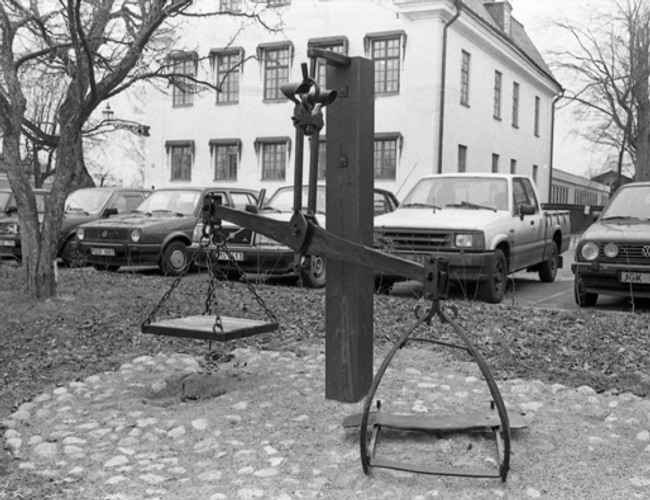
3. Nordenfeldt’s House
Formerly Duke Karl IX’s Royal Manor. The Duke lived here when he visited Bro. Mrs. Regina Nordenfeldt built Kristinehamn’s first stone house directly on one of the wing’s basement floors. The townspeople saw the advantage of building in stone when the city burned down in 1777. Image from Kristinehamn’s Image Archive.
4. Järnvågen – the Iron Scale
Here stands a replica of the old Iron Scale where iron was once weighed before being shipped from the city. A reminder of the time when Kristinehamn was a central hub for iron handling. The fee for weighing the iron on the scale was the city’s largest source of income for a long time.
5. Bridge Vågbron
The bridge has been a central part of the city’s history. Kristinehamn was once called Bro before it became a city. Some say it was named after the bridge being an important meeting place along the old national road between Sweden and Norway. The bridge has been rebuilt several times over the years, including to accommodate when the Sjöända railway ran a track across the bridge to the loading dock at Sjötullen. However, the strain became too much, and the bridge had to be rebuilt again in 1875.
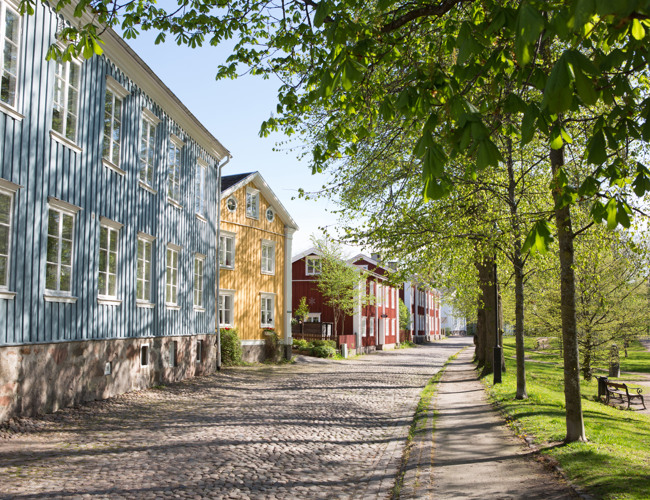
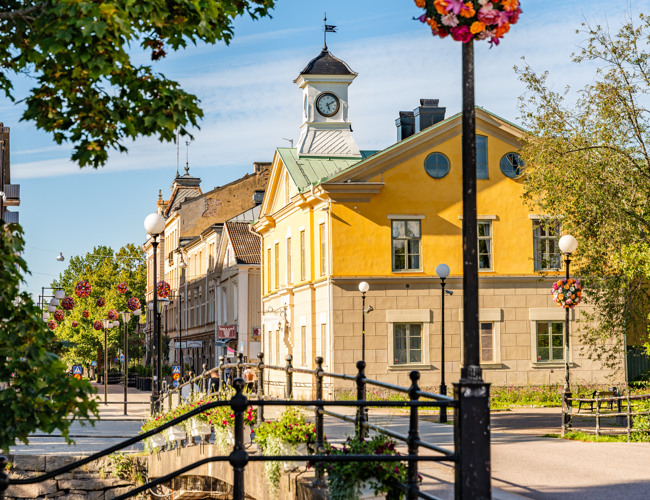
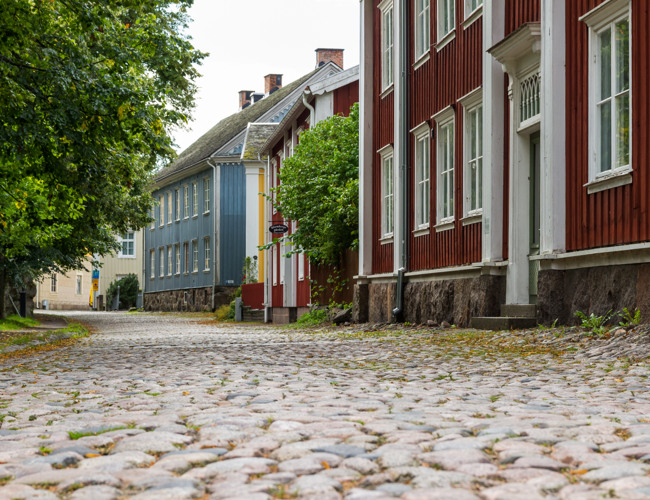
6. The Town Hall (Rådhuset)
After the fire in 1777, Kristinehamn’s new Town Hall was built on the same site as the old one. The plans, approved by Gustav IV Adolf, led to the construction of a stylish building.
7. Trädgårdsgatan
One of the city’s most picturesque streets offers a charming 18th-century atmosphere. Here, beautiful old wooden houses line the cobbled street, and you can feel the breath of history as you walk along. The name Garden Street was given after the owners of the properties planted gardens as fire protection against the water of Varnan. The gardens were later donated to the city and became the current Nordenfeldt Park, making the area even more beautiful.
8. Grundelsgården
The farm is one of the city’s most impressive older mansion houses, built after the fire in 1777. The Grundel family owned the farm from 1891 and it served as the office of Nya Kristinehamnsposten until 1929. Today, it is a residential house, but the atmosphere from the past still remains.
9. Isbergsgården
The farm was built after the fire in 1771 and has undergone several changes. The beautiful veranda and balcony were added in the 1920s, and the building carries traces from both the 1600s and the 1800s.
Kristinehamn is a very cozy town with many lovely walking paths, unique shopping, and its proximity to the water. There are also several unique stories, such as the history of the world market price of iron and how the world’s largest Picasso sculpture ended up here!
Lasse, Chairman of the Caravan Club
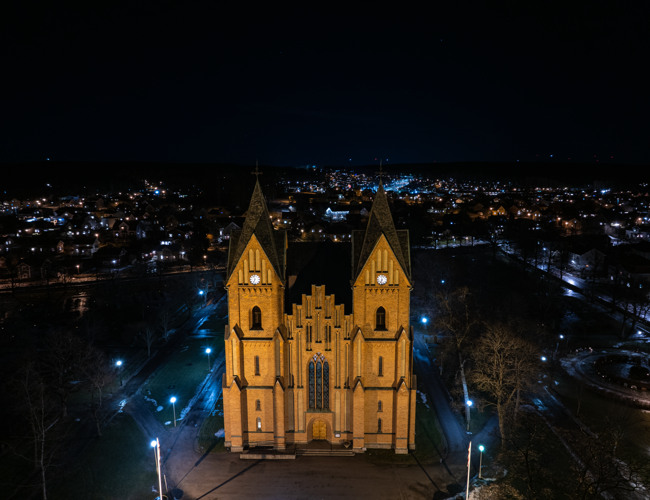
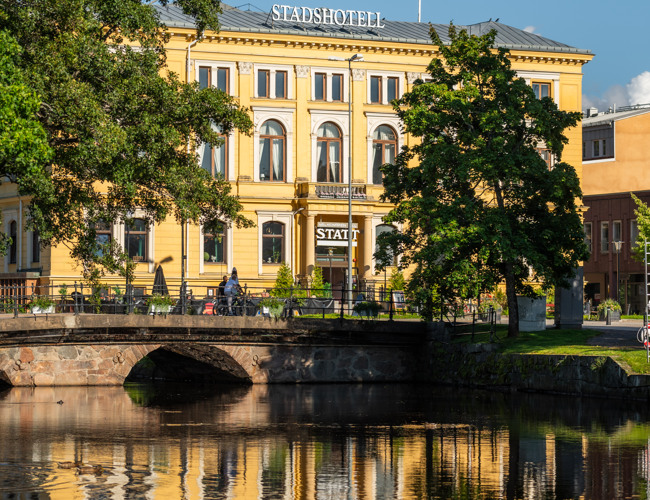
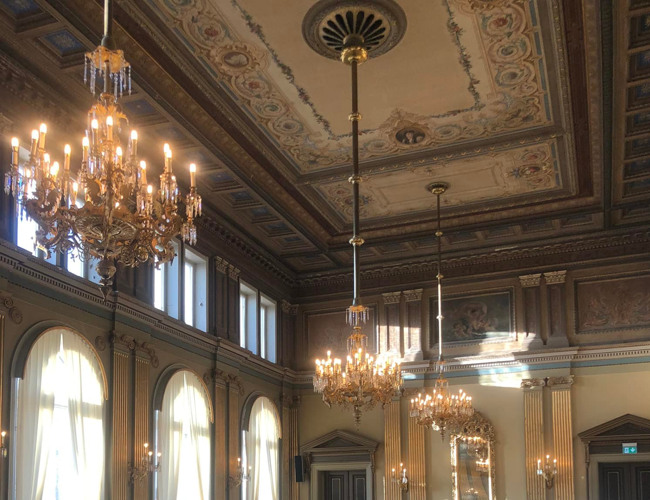
10. Kristinehamn Church
One of Sweden’s finest examples of Neo-Gothic architecture, designed by Carl Georg Brunius. The church has changed over the years but has maintained its unique character. Near the church, Gustaf Fröding’s father and one of his sisters are buried.
11. Frödingsgården
The farm was the home of Gustaf Fröding and his family between 1868 and 1882. Here, in a small attic room, the young Gustaf lived, where he likely wrote his first poems. Between the floorboards, small pieces of paper with his schoolboy handwriting have been found, where he wrote simple verses. The Fröding family moved to Kristinehamn in 1867. In 1872, Gustaf’s father, Lieutenant Ferdinand Fröding, bought the house after inheriting money. Gustaf, who later became one of Sweden’s most beloved poets, also inherited a fortune when his father died in 1881. Despite this, his childhood was not filled with happiness, as the family struggled with illness and financial difficulties.
Fröding does not directly mention Kristinehamn in his poems, but many believe that the town and its inhabitants inspired his work. For example, Fröding expert Daniel Toijer suggests that Gustaf’s confirmation teacher, Pastor J Bernhard Unger, may have been the model for the poem “Våran prost.” Tip! Join a guided tour, see Fröding’s Path, link below.
12. Stadshotellet
The architect was Axel Kumlien. The Kristina Hall was one of the country’s most prestigious banquet halls at the time. The ceiling is described by experts as Neo-Renaissance. Almost every detail is typical of the Renaissance. When you look at the ceiling and walls, you can see many beautiful details. The ceiling paintings are partially done in oil, including the portraits embedded in the ceiling. Among them are the two daughters of cellar master Carl August Wadsten.
Explore Kristinehamn Your Way
There are many other ways to explore Kristinehamn’s charm and rich history beyond following the walking map. Take the signposted tour through the Old Town, buy the “Gå och se” (Walk and See) brochure (60 SEK) with stories about the city’s houses, or stop by the tourist office for personal favorite tips. Stay a little longer and discover even more.
Guided Tour: Follow to 18th Century Kristinehamn
The Vintage Man on the Old Town Signposted Tour
Guided Tour: Gustaf Fröding Lived in Kristinehamn for Over 10 Years
Evening in Central Kristinehamn
